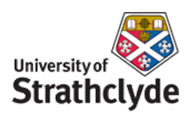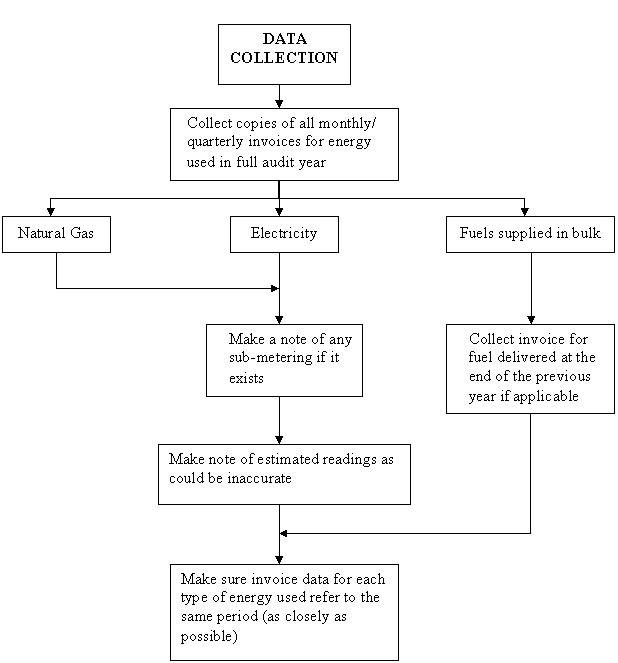


Methodology for Determining the Energy Demand
The method for determining energy demand in rural locations can be broken down into three constituent parts: Data Collection, Data Estimation and Data analysis. We have developed a series of flowcharts for determining and collating the energy demand; from which a better understanding of the energy usage can be obtained. The flowcharts are primarily based on CIBSE preliminary audits.
Data Collection
Figure 1. Data Collection Flowchart
Monthly and quarterly invoices should be collected for the full audit year for electricity, mains gas and fuels supplied in bulk. In rural locations mains supply gas is not always available, therefore fuels supplied in bulk – such as kerosene, propane, butane and gas oil – tend to be more common.
Table 1. Typical Net Calorific Value for Bulk Fuels
Fuel
Fuel Type
Net Calorific
Value (kWh/m3)Class C2
Kerosene or Burning oil
12.11
Class D
Gas oil
11.86
Class E
Light fuel oil
11.13
Class F
Medium fuel oil
10.97
Class G
Heavy fuel oil
11.19
It is important to note that bulk fuels delivered at the end of the year prior to the audit year should also be included and that a delivery at the end of the audit year can usually be excluded. For electricity and natural gas, all metering and supply points should be identified from the invoices and all supplies accounted for. It is important to note any estimated readings and if there are more than two estimates in the audit year additional invoices with real readings should be collected for comparison.
| MSc: Renewable Energy Systems and the Environment | © University of Strathclyde 2010 |
